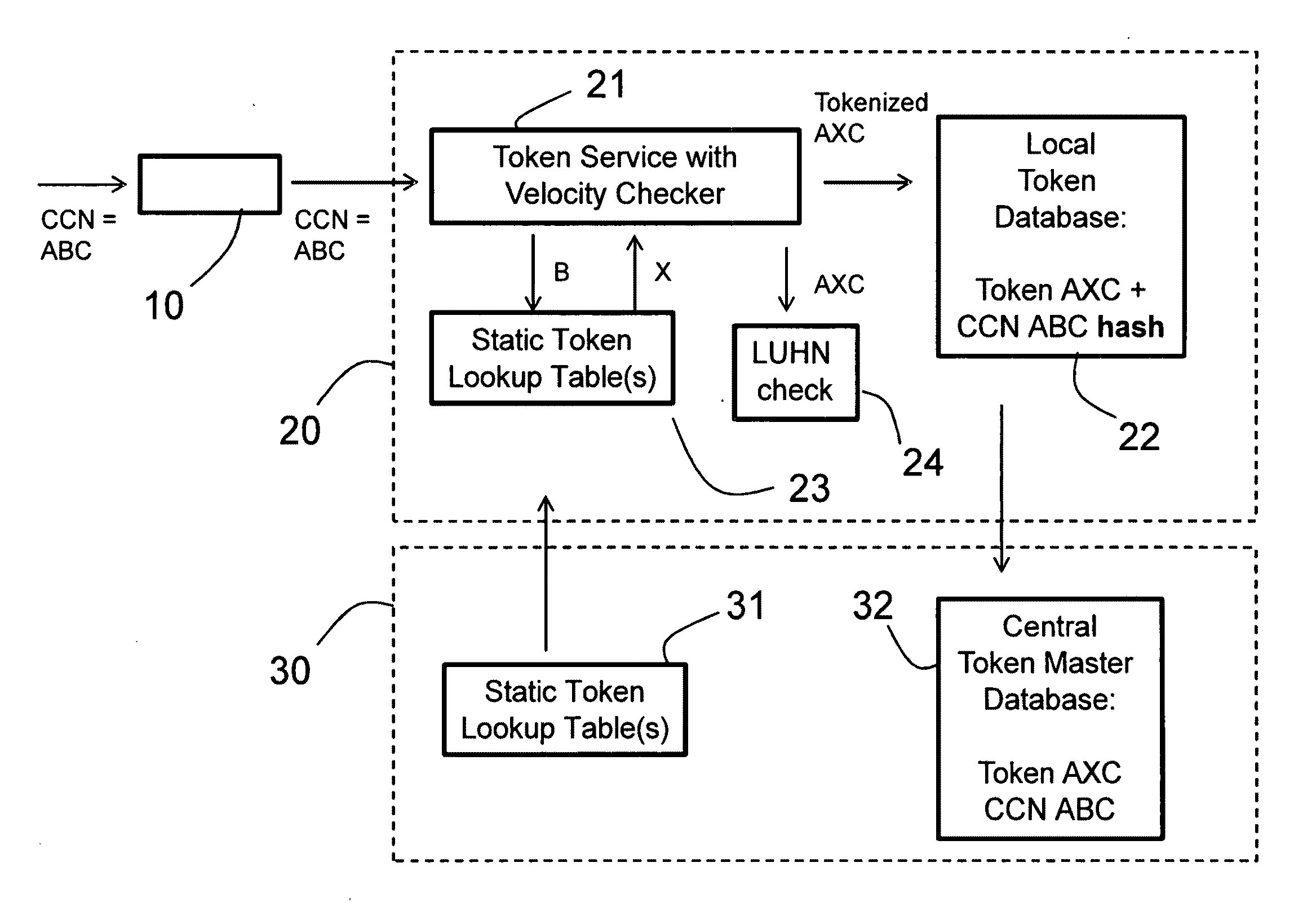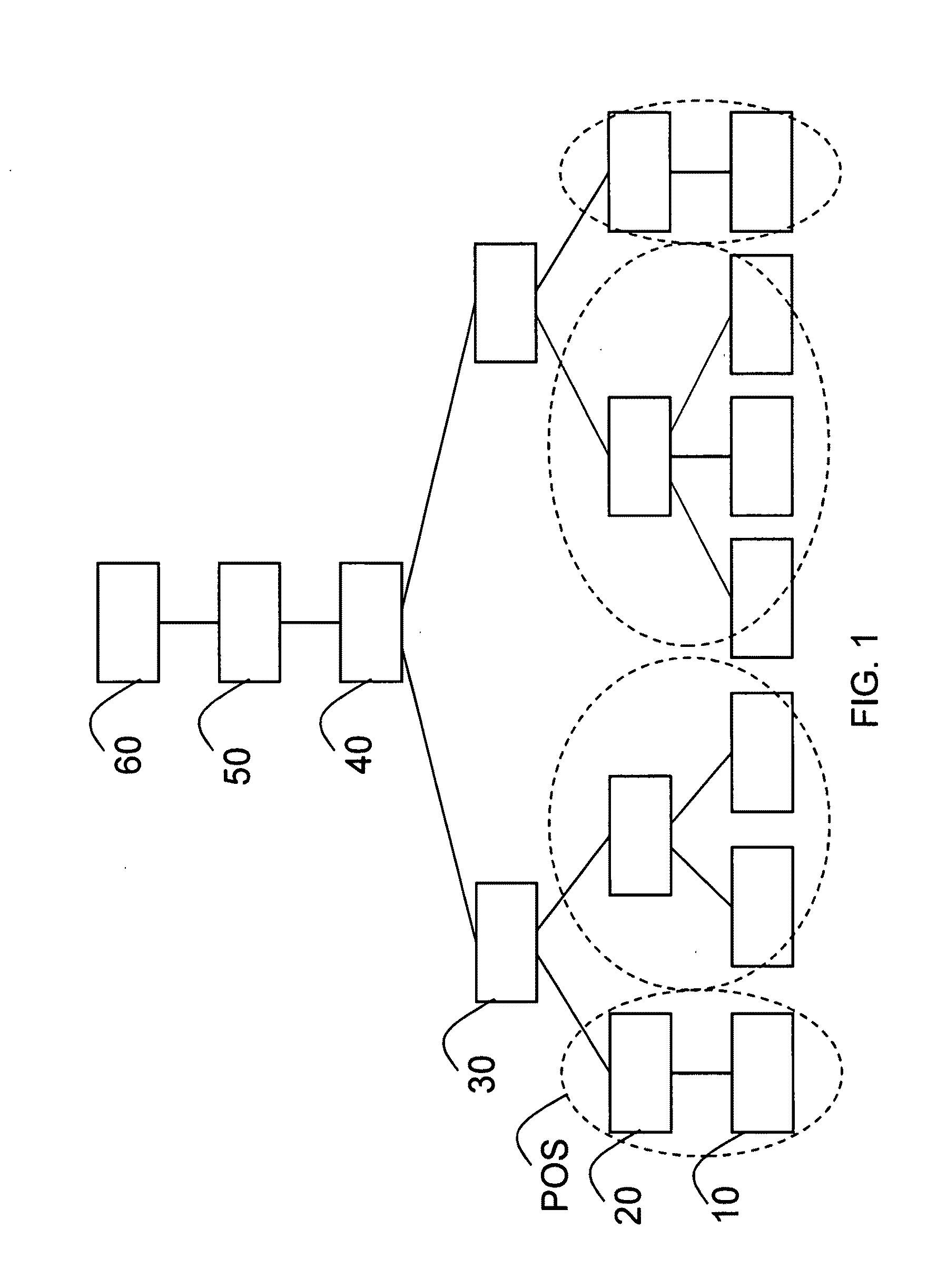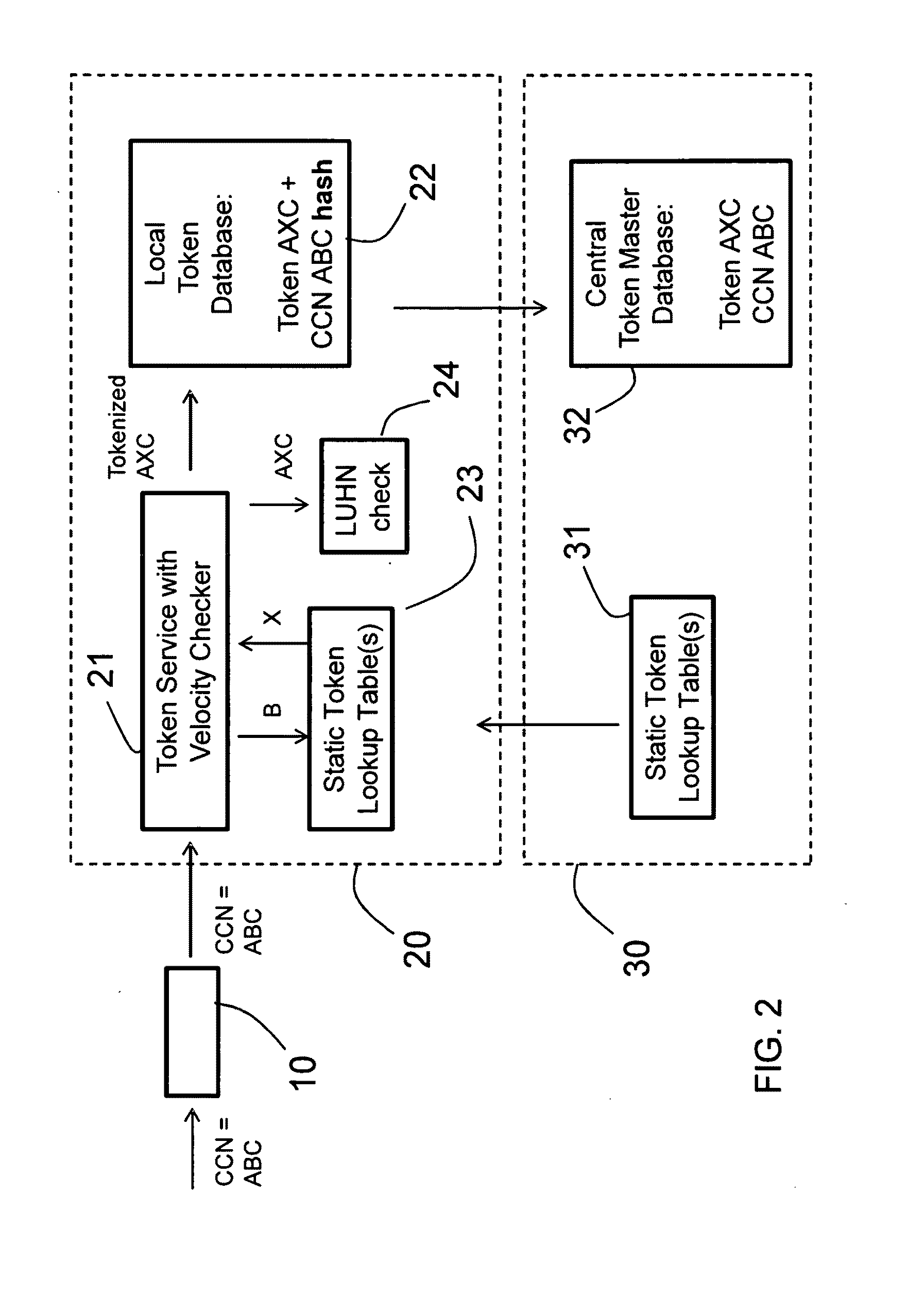System and method for distributed tokenization using several substitution steps
- Summary
- Abstract
- Description
- Claims
- Application Information
AI Technical Summary
Benefits of technology
Problems solved by technology
Method used
Image
Examples
first embodiment
[0072]In a tokenization method, schematically illustrated in FIG. 3, the local server has received two token lookup tables from the central server. A sensitive string of characters including four groups of three digits and one group of four digits is received. In a first step, the first token lookup table is used to substitute the first two groups of three digits each into a token with the same number of digits. Accordingly, a first substring of six digits in total is here substituted by a first token with six digits, to form a first tokenized string of characters. Then, in a second step, the second token lookup table is used to substitute the second and third group of three digits each into a token with the same number of digits. Here, the second group of digits comprises a token from the first substitution step, whereas the third group of digits comprises digits from the original sensitive string of characters. Accordingly, a second substring of six digits in total is here substit...
third embodiment
[0076]In a tokenization method, schematically illustrated in FIG. 5, the sensitive string of characters again includes four groups of three digits and one group of four digits. The first two substitution steps are here the same as in the example illustrated in FIG. 3. Thus, in a first step, the first token lookup table is used to substitute the first two groups of three digits each into a token with the same number of digits, to form a first tokenized string of characters. Then, in a second step, the second (or first) token lookup table is used to substitute the second and third group of three digits each into a token with the same number of digits, to form a second tokenized string of characters. Then, in a third substitution step, the first token lookup table is again used to substitute the first two groups of three digits each into a token with the same number of digits, to form a third tokenized string of characters. Alternatively, it is possible to instead use the second token ...
fourth embodiment
[0079]In a tokenization method, schematically illustrated in FIG. 6, the sensitive string of characters again includes four groups of three digits and one group of four digits. The first two substitution steps are here the same as in the example illustrated in FIGS. 3 and 5. Thus, in a first step, the first token lookup table is used to substitute the first two groups of three digits each into a token with the same number of digits, to form a first tokenized string of characters. Then, in a second step, the second (or first) token lookup table is used to substitute the second and third group of three digits each into a token with the same number of digits, to form a second tokenized string of characters. Then, in a third substitution step, a third lookup table is used to substitute the first three groups of three digits each into a token with fewer characters. This is rendered possible by the use of alphanumerical tokens in the third token lookup table. In this example, the 9 digit ...
PUM
 Login to View More
Login to View More Abstract
Description
Claims
Application Information
 Login to View More
Login to View More - R&D
- Intellectual Property
- Life Sciences
- Materials
- Tech Scout
- Unparalleled Data Quality
- Higher Quality Content
- 60% Fewer Hallucinations
Browse by: Latest US Patents, China's latest patents, Technical Efficacy Thesaurus, Application Domain, Technology Topic, Popular Technical Reports.
© 2025 PatSnap. All rights reserved.Legal|Privacy policy|Modern Slavery Act Transparency Statement|Sitemap|About US| Contact US: help@patsnap.com



